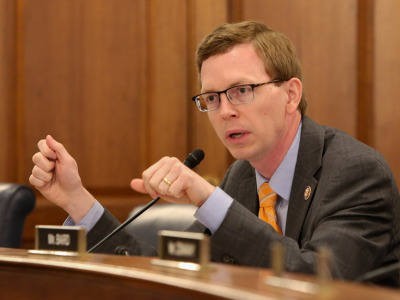Calls for flexibility with the haying and grazing of cover crops on prevented planting acres have USDA exploring its options and lawmakers trying to make it easier for them to do so.
The issue centers around trying to achieve a balance between throwing a lifeline to producers dealing with unexpected amounts of water in what were supposed to be row crop fields by this point and preventing what has been perceived as double dipping in the past: Collecting a prevent-plant indemnity and taking feed off of the same land.
Under current law, producers who plant a cover crop on prevent plant (PP) acres must wait until the beginning of November to either hay or graze whatever forage is produced to receive the full PP payment rate of 55%. A USDA spokesperson tells Agri-Pulse this restriction began in 2004 after “questions were raised regarding double insurance and the related prevented planting provisions.” Producers who plant a cover crop have the choice to either hay and graze the acres before the Nov. 1 deadline in exchange for a reduction (to 35%) in their prevented planting payment.
But given the struggles of the 2019 planting season, USDA is being asked to adjust the established haying and grazing date.
“The arbitrary Nov. 1 grazing/harvest date for cover crops planted on prevent plant acres also serves as a barrier to cover crop adaption because in the northern United States the risk of adverse weather limiting the forage and grazing use of cover crops by Nov. 1 discourages utilization of cover crops,” a bipartisan contingent of eight senators said in a letter to USDA earlier this month. They say the nationwide date “does not treat farmers equitably across the United States.”
That formal request and other more informal inquiries have USDA officials wondering if they can make such a change. Multiple sources tell Agri-Pulse the idea has been explored within the walls of the department, but there’s yet to be consensus on whether the department can legally change the Nov. 1 date this year.
“I’m very surprised [USDA's Office of General Counsel] has had to go through the machinations they’ve had to go through to find a way to make this change. But, here we stand,” a source who requested anonymity to speak candidly told Agri-Pulse. “It’s not in statute, it’s not in the contract, [crop insurance] companies have said ‘we’ve got no issues.’ Nobody’s going to jump up and down and scream and fuss about this. I don’t think anybody’s going to sue.”
One potential issue that could surface would be the potential for habitat loss for wildlife who might use the cover crop for feed or cover. But Ryan Stockwell, director of sustainable agriculture for the National Wildlife Federation, said the realities of how late some of these cover crops will go in the ground likely won’t cause any issues. He said the current nesting season in many cases ends in September, and many of the cover crops planted on PP acres likely won’t have much forage to speak of before then due to late sowing.
“So there’s certainly most of September and all of October that should be available for haying and grazing, and it wouldn’t have much of an impact on the nesting situation,” he said in an interview with Agri-Pulse.
There’s also an effort on Capitol Hill to authorize the date change through legislation. Freshman House Ag Committee members Dusty Johnson, R-S.D., and Angie Craig, D-Minn., have introduced the Feed Emergency Enhancement During Disasters Act (H.R.3183), which would give the USDA discretion to move up the Nov. 1 deadline for haying and grazing.
Johnson — with a stack of informational cards about the bill he was handing out to colleagues in hand — told Agri-Pulse he thinks the measure could possibly move on the suspension calendar, which is reserved for legislation with minimal opposition and requires a two-thirds vote.

Rep. Dusty Johnson, R-S.D.
“I certainly don't tell Speaker Pelosi what to put on the floor, but this is really an important issue,” Johnson said. “This is multimillion-dollar impacts on a number of states. I know we love to fight about things in Washington, D.C., but this is one thing we should be able to get agreement on.
“This is not a new government program that producers want; they don't want it,” he added. “They can't feed their cattle dollar bills. What they want is the ability to help themselves.”
USDA is “not sure they have the authority to do this. That's why I think this legislation can be really helpful," he said.
The time-sensitive nature of the issue also limits the bill’s options as it tries to move across Capitol Hill. A companion bill has not been introduced in the Senate, although Johnson and Craig note conversations on that front are ongoing.
On Monday, Craig said she’ll have a better idea of where the bill stands as the week unfolds and she has a chance to chat with other House Democrats on the issue. But even if USDA comes out with a decision before they have a chance to move the legislation, she said that passing the bill anyway would serve as a solid backstop for the issue.
“I think we’ll keep moving this bill,” she said. “We want to make sure that the secretary has the explicit authority to move in these tough times when there’s weather or flood or disaster-related issues. We’re going to look to make sure that there’s some certainty in the future.”
For more news, go to www.Agri-Pulse.com.


